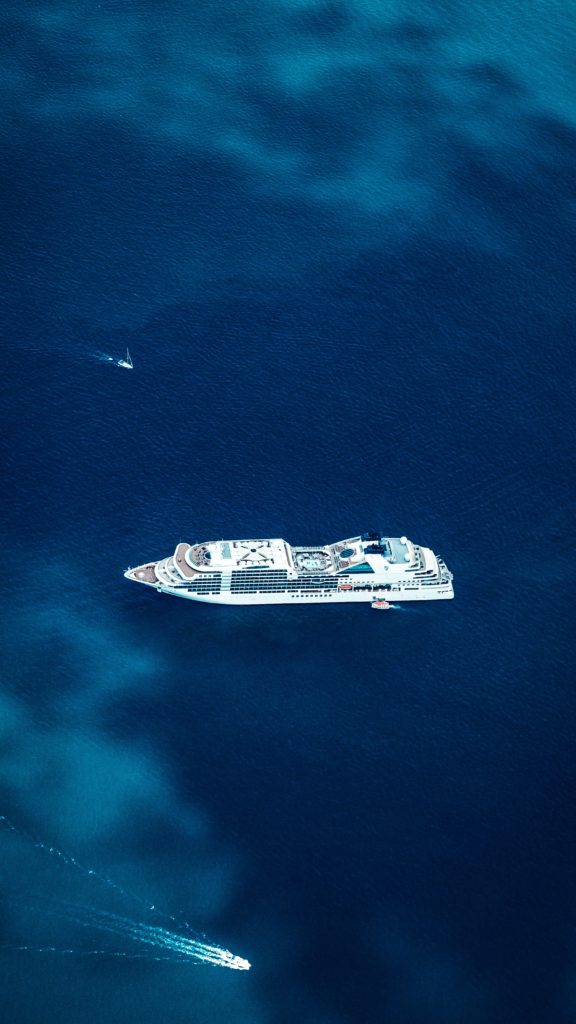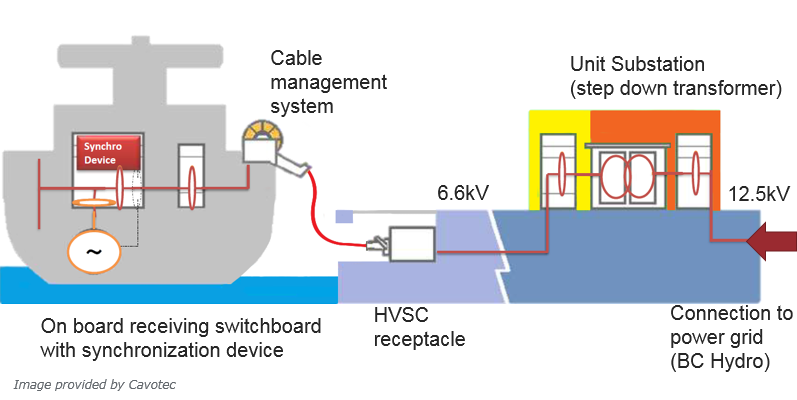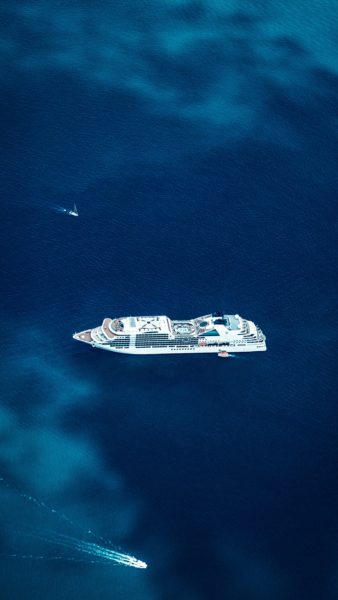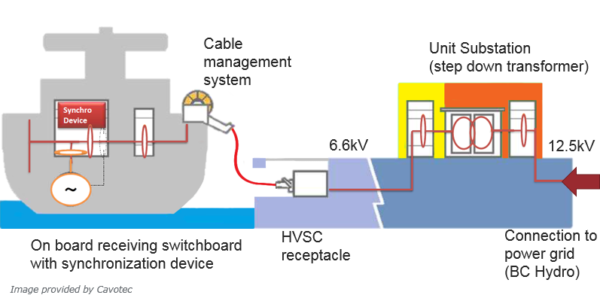Basically…
…machines on the cruise ships are very energy efficient and produce their electricity very cheaply.
…electricity from power plants on land must be transformed so that it can be used on the ship. Ship’s grids have a frequency of 60 Hertz, while shore power is produced in most parts of the world at 50 Hertz. The costs of this conversion process (cold ironing) are very high and can account for up to 50 per cent of the output energy.
…cruise ships require very large amounts of energy so that this energy must be available in the land network exactly in the required time windows. A medium-sized cruise ship requires between 4.5 and 7 Megawatts. A ship of the super-large generation even consumes around 10 Megawatts.
…both cruise ships and ports must be equipped with the appropriate technology to accommodate shore power.
Shore power for cruise ships
Cruise ships, which are capable of receiving shore power and docking inshore power offering ports, can largely switch off their engines during berthing periods and reduce emissions. Especially in large port cities, in addition to CO2, the emission of particulate matter and the harmful sulphur and nitrogen oxides play an important role.
This raises the question of why not all ports are equipped to offer cold ironing and why not all ships take advantage of the opportunity to be supplied with shore power? One reason is that equipping older ships with a shore power connection can cost up to EUR 2 million. In addition, the electricity that ships would purchase from shore is considerably more expensive than the electricity they produce themselves. The installation of a cold ironing system at a cruise ship terminal also costs several million euros, although the European Union has been providing financial support for those connections in important ports since 2014.
Another problem is the big price difference between shore power and “ship-owned” power. In Germany, the European country with the highest electricity prices, shore power is between two and three times more expensive than the electricity generated on board with the often subsidised ship diesel. It is therefore not surprising that shipowners want to avoid cold ironing whenever possible.
Is shore power really sustainable?
Apart from the above-mentioned cost factor, the supply of shore power to cruise ships appears to be an environmentally friendly and sustainable solution, especially when we consider that a cruise ship spends up to 50 per cent of its operating time in port, depending on the route and sailing area.
However, there are significant regional differences in the generation of shore power. For ships in the North Sea and Baltic Sea, the ecological advantage is very large, but the situation is quite different in the Mediterranean. Here, on land, coal-fired power plants are still predominantly in operation for generation, which, in terms of pollutant emissions, have an even worse environmental balance than modern ships. This is because the generators operating in modern ships are usually equipped with exhaust filters or even catalytic converters. Nevertheless, since 2006 the EU Commission has been recommending the use of shore power even in the area where the pollutant balance is actually worse since emissions from densely populated port cities are shifted to less populated areas where the coal-fired power plants are usually located.
An international comparison
In an international comparison, China and the Pacific Coast of North America are the pioneers in terms of shore power use for cruise ships and container ships. China is home to seven of the world’s ten largest container ports. The number of shore power connections in these ports is expected to rise to just under 500 by the end of this year. Every commercial ship new built in China must have the technology for shore power onboard. From 2021, cruise ships will be required to use shore power onboard, and from 2022 ferries and container ships, too, during berthing periods.
In Californian ports, some of the ships docking in the port have had to use shore power since 2014. This began with a minimum quota of 50 per cent of the ships of a particular shipping company, from this year on it will be 80 per cent. The gradual increase has given the shipowners time to get used to the regulation and to implement technical requirements.
Emission Control Areas
There are not many regions on our planet where emission from large ships play a role at all. So-called Emission Control Areas (ECAs) only exist in the North Sea and Baltic Sea, 200 nautical miles off the North American coast including Hawaii, in water protection zones around Iceland, off the coast of Puerto Rico and the U.S. Virgin Islands, and since 2019 in three designated protection zones in China.
The ECAs are defined by the International Maritime Organization (IMO), a sub-organization of the UN. ECAs are areas in which strict limits for the emission of pollutants from ships are binding. Their definition is based on Annex VI of 1997 to the “International Convention for the Prevention of Pollution from Ships” (MARPOL). The three zones in China are not officially defined by the IMO, they are Domestic Emission Control Areas, defined by the Chinese Ministry of Transport.
As you can see, there is a very complex system around various regulations, subsidies and limits around the thicket of ship emissions. The goal is clearly defined, but there is still a lot of work to be done by governments and companies to get there…



